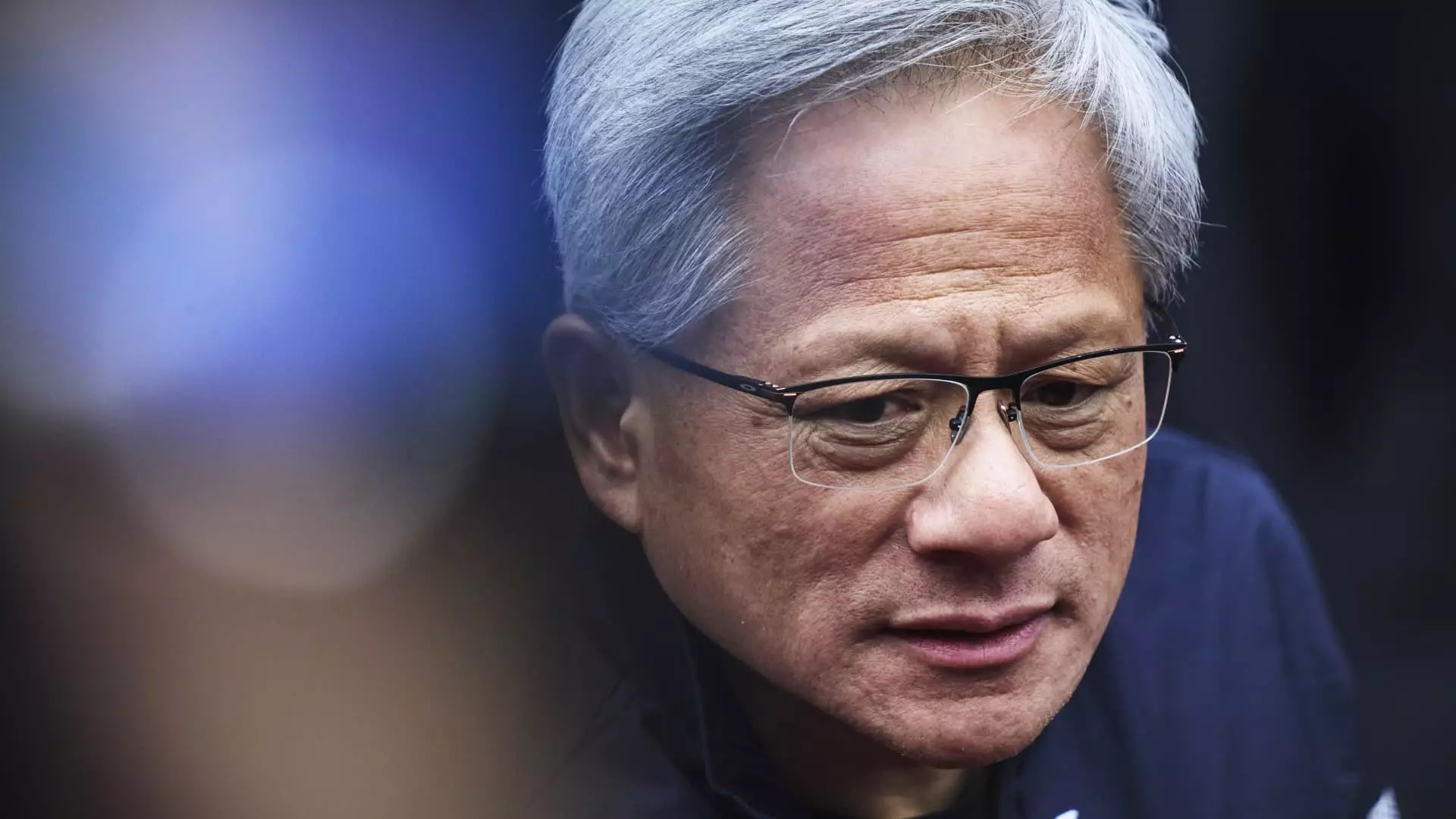The interplay between technology and government policy has reached unprecedented levels in recent years, particularly in the rapidly evolving domain of artificial intelligence (AI). This convergence will become more apparent as leaders from critical sectors engage in crucial discussions. One such potential alliance is between Jensen Huang, the CEO of Nvidia, and President Donald Trump. Huang’s scheduled meeting with Trump not only reflects the growing importance of AI in the global economic landscape but also heralds significant implications for U.S. semiconductor policy amid intensifying international competition.
At the core of Huang and Trump’s meeting lies the intricate landscape of U.S. artificial intelligence policy. With AI rapidly transforming industries and economies, there is an urgent need for a coherent national strategy to navigate its potential impacts. Sources close to the situation suggest that Huang will advocate for policies that promote innovation while safeguarding U.S. technological superiority, especially concerning competitors like China. As both leaders engage in dialogue, the focus will likely center on how to balance ethical considerations with economic growth, ensuring that America remains at the forefront of AI development.
Given the significant strides made by China’s burgeoning tech companies and their aggressive push into AI, the conversation could transcend mere policy frameworks. The mention of China’s AI firm DeepSeek in their dialogue signifies the urgency to address international competition directly. This meeting presents an opportunity for the U.S. to position itself not just as a leader in AI but as a proactive participant in shaping global standards and guidelines for its usage.
In addition to policy discussions surrounding AI, Huang will undoubtedly touch on the regulatory challenges Nvidia faces in the semiconductor sector. Nvidia, now recognized as one of the U.S.’s most valuable firms, stands at a crossroads created by export restrictions on its high-performance AI chips. The implications of such regulations affect not only Nvidia’s profitability but also the broader landscape of technological advancement in the U.S.
The Biden administration’s implementation of stringent policies designed to limit chip sales to countries such as China and Russia presents a complex dilemma. These restrictions could stifle market opportunities for U.S. companies. However, Trump may have the power to overturn these regulations, offering potentially lucrative avenues for all parties involved if he chooses to prioritize economic growth over geopolitical tensions. Huang’s insights into the ramifications of these evolving regulations will be pivotal in shaping future legislative actions.
The CHIPS Act and Domestic Production
Fostering domestic semiconductor production is another critical agenda item in Huang and Trump’s forthcoming meeting. One of the cornerstones of this initiative is the CHIPS Act, previously established to encourage companies like Intel and TSMC to construct chip factories on U.S. soil. With most of Nvidia’s chips being manufactured in Taiwan, the emphasis on revitalizing U.S. production capabilities could reshape the landscape of semiconductor manufacturing.
Huang may advocate for increased investment in domestic chip production to reduce reliance on foreign manufacturers and bolster national security. By engaging in development on home turf, the U.S. can not only secure its semiconductor supply chains but also create jobs and stimulate economic growth in a critical sector.
The dynamic between political leadership and technology executives like Huang cannot be ignored. In recent months, there has been a notable shift in the relationship between Silicon Valley and Washington D.C., with major CEOs increasingly participating in political dialogues. The assembling of tech leaders, including prominent figures like Elon Musk and Jeff Bezos, attending Trump’s inauguration signifies a collaborative approach toward addressing prevalent issues within the tech landscape.
This meeting between Huang and Trump is more than an isolated encounter; it is part of a broader trend where technology and policy are intricately interwoven. The collaborative discussions are likely to lead to a recalibration of the relationship between government regulations and technological innovation, fostering an environment conducive to growth and competitive advantage on the global stage.
As the landscape of AI and semiconductor regulations continues to shift, the significance of meetings like that of Huang and Trump will likely ripple through both industry and government, playing a pivotal role in defining the future of technology in America.


Leave a Reply